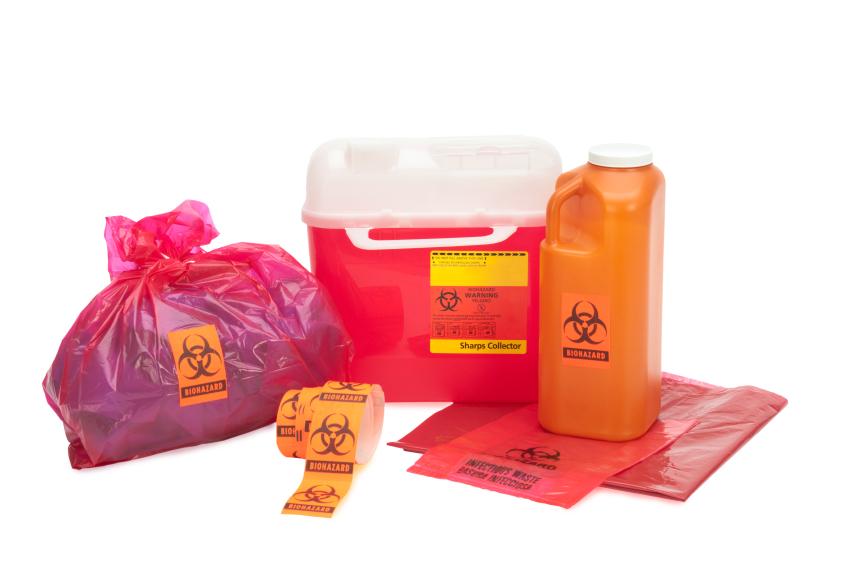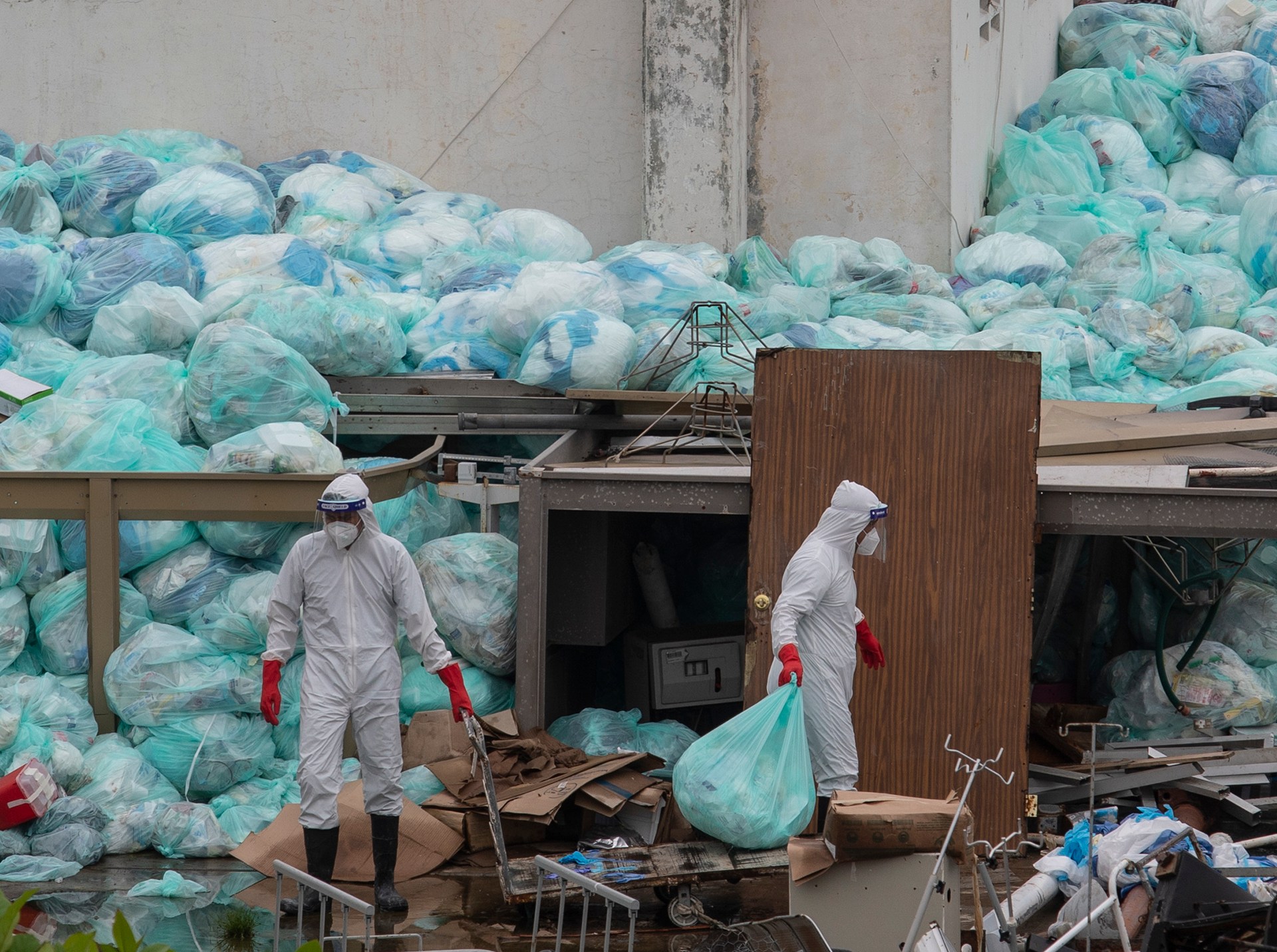Professional Solutions for Health: Unveiling the Medical Waste Removal Service Benefit
Professional Solutions for Health: Unveiling the Medical Waste Removal Service Benefit
Blog Article
Understanding the Different Sorts Of Waste Disposal Techniques
In the world of waste management, the range of disposal strategies offered today is huge and differed, each approach serving a distinctive function in dealing with the obstacle of garbage disposal. click here. From recycling techniques that aim to offer new life to materials, to the detailed processes of contaminated materials management, the landscape of waste disposal is intricate yet critical for ecological sustainability. Recognizing the nuances of these various strategies not just drops light on the importance of liable waste monitoring yet additionally motivates us to reconsider our technique towards waste disposal in a swiftly progressing world

Recycling Methods
Recycling approaches are important for sustainable waste management techniques in both commercial and property settings. medical waste removal service. By executing efficient recycling methods, a significant amount of waste can be drawn away from landfills, conserving natural deposits and decreasing the environmental influence of manufacturing processes
In residential locations, curbside recycling programs play an essential function in motivating families to separate recyclable products from general waste. Materials such as paper, plastics, glass, and metals can be sorted and gathered for handling into new items, decreasing the demand for resources and energy-intensive production procedures.
Industrial centers likewise count on recycling approaches to lessen waste generation and advertise a circular economic situation. By executing closed-loop systems, companies can recycle materials within their production procedures, lowering expenses and ecological footprint. medical waste removal near me. Additionally, industrial recycling programs usually involve collaborations with specialized reusing centers to ensure that products are appropriately arranged, processed, and rehabilitated into the supply chain
Composting Strategies

Aerated static heap composting entails blending organic waste materials in a huge heap and consistently transforming it to ensure proper aeration. This technique is effective for large composting procedures. On the other hand, vermicomposting makes use of earthworms to damage down natural issue right into nutrient-rich spreadings. This strategy is appropriate for smaller-scale operations and households.
In-vessel composting entails putting organic waste in a shut container with controlled conditions for temperature and oygenation. This technique is efficient for taking care of food waste in city areas. Last but not least, windrow composting consists of forming long rows of organic waste and on a regular basis transforming them to promote disintegration. This strategy is frequently utilized in agricultural setups.
Landfill Disposal
Garbage dump disposal is a frequently used method for handling waste that can not be recycled or composted. It includes hiding waste in designated areas of land, with proper precautions to protect against environmental contamination. Landfills are crafted facilities developed to separate waste from the surrounding atmosphere. The waste is compacted and covered with dirt daily to reduce odors, hinder bugs, and lessen the spread of litter. Modern garbage dumps are outfitted with safety liners and monitoring systems to avoid leak of damaging compounds right into the dirt and groundwater. Methane gas, a by-product of decomposing organic waste in garbage dumps, is commonly collected and utilized as a source of renewable resource. In spite of developments in landfill modern technology, issues stay regarding the long-term ecological impacts, such as groundwater contamination and greenhouse gas emissions. Efforts to lower dependence on land fills include advertising waste reduction, reusing, and discovering different garbage disposal methods to minimize the environmental footprint linked with traditional garbage dump disposal methods.

Waste-to-Energy Incineration
Incineration of waste for power generation is a technique progressively being considered as an option to standard garbage dump disposal methods. Waste-to-energy incineration includes the burning of waste materials at heats, usually in specialized centers designed to create electrical power or warmth through the process - more helpful hints click here. This method not just reduces the volume of waste that would certainly otherwise be predestined for landfills yet additionally utilizes the warmth produced throughout incineration to develop energy
One of the essential benefits of waste-to-energy incineration is its capability to generate power while lessening the ecological influence contrasted to traditional land fill disposal approaches. By transforming waste into power, this method assists in minimizing greenhouse gas emissions and reliance on fossil fuels for energy generation. In addition, waste-to-energy centers are equipped with advanced air pollution control modern technologies to mitigate potential toxic wastes launched throughout the burning process.
Contaminated Materials Monitoring

Thinking about the vital value of responsible waste monitoring techniques, especially in the realm of environmental sustainability, the emphasis currently changes towards the complex domain name of Hazardous Waste Monitoring. Contaminated materials poses considerable threats to both human health and the atmosphere, necessitating specific handling and disposal strategies. Typical instances of unsafe waste include chemicals, batteries, pesticides, and electronic waste.
Contaminated materials Management involves the recognition, collection, transportation, treatment, and disposal of materials considered dangerous or possibly harmful. This procedure needs adherence to strict regulations and standards to reduce adverse effects on ecosystems and public health and wellness. Various approaches are employed in taking care of hazardous waste, including recycling, safe land fills, encapsulation, and chemical therapy.
Appropriate Harmful Waste Administration is vital for stopping contamination of soil, water resources, and air pollution. It is essential for markets, research laboratories, medical care facilities, and various other generators of contaminated materials to execute durable management approaches, training programs, and emergency feedback intends to make certain the risk-free handling and disposal of these products. Failure to take care of harmful waste appropriately can have significant repercussions, underscoring the importance of diligent and liable methods in this field.
Final Thought
In verdict, waste disposal methods play an essential role in handling and reducing the influence of waste on the setting. It is vital for markets and people to understand the various waste disposal techniques offered and choose the most suitable method for lasting waste administration.
In the realm of waste administration, the array of disposal techniques available today is vast and differed, each method offering an unique purpose in dealing with the challenge of waste disposal. click here. From recycling approaches that aim to provide new life to products, to the intricate procedures of harmful waste management, the landscape of waste disposal is complex yet crucial for environmental sustainability. Recognizing the nuances of these different techniques not only drops light on the value of liable waste management however additionally triggers us to reconsider our technique towards waste disposal in a quickly developing globe
Efforts to lower reliance on garbage dumps consist of advertising waste decrease, recycling, and checking out alternative waste disposal techniques to minimize the environmental impact connected with traditional land fill disposal practices.
It is important for people and sectors to understand the different waste disposal methods available and pick the most suitable technique for sustainable waste monitoring.
Report this page